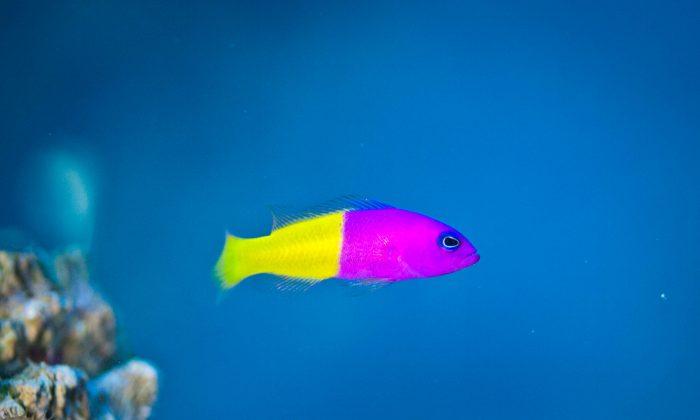The dusky dottyback, a fish living in the Great Barrier Reef, can change color to blend in with unsuspecting adult damselfish so it can prey on their young.
“We tested this wolf in sheep’s clothing predatory benefit by putting dottybacks with their regular prey—the juvenile damselfish,” says Fabio Cortesi, a visiting scholar at the University of Queensland.
“We found that when dottybacks are the same color as the damselfish parents, they’re up to three times as successful in feeding on the juveniles. The dusky dottyback and damselfish are similar in body shape and size, so this mimicry works really well, allowing them to mingle and sneak up on their prey.
“Smaller juvenile damselfish are the primary prey, but the adults don’t overly react to the dottybacks either. They are a master of disguise.”
Researchers were interested in finding out why some dusky dottybacks were yellow and some were brown.
“The team looked at whether they were a different species or population, but they’re actually identical genetically and simply have the ability to change color between brown and yellow,” Cortesi says. “The change takes about two weeks, and is likely to occur when the dusky dottyback travels between feeding areas inside its territorial range.”
Changes Color in 2 Weeks
For the study, published in Current Biology, researchers built artificial reefs with live coral and coral rubble and looked at whether the dusky dottybacks changed their color based on the habitat or the color of the fish that populate their natural habitat.
“If you put a brown dottyback with yellow damselfish, it'll turn yellow over the course of about two weeks and vice versa,” Cortesi says.
The mimicry mechanism had another advantage for survival, says Justin Marshall, professor of sensory neurobiology at the Queensland Brain Institute.
“By changing its color to fit in with the local population of damselfish, the dusky dottyback blends into the habitat as a passive defense mechanism, so they don’t stand out to bigger predators.”
Researchers from University of Basel, the Australian National University, the University of Cambridge, James Cook University, the University of Saskatchewan, and the University of Gothenburg collaborated on the study.
[aolvideo src=“http://pshared.5min.com/Scripts/PlayerSeed.js?sid=1759&width=480&height=350&playList=518477797&responsive=false”]
Source: University of Queensland. This article was previously posted on Futurity.org under CC by 4.0.





Friends Read Free